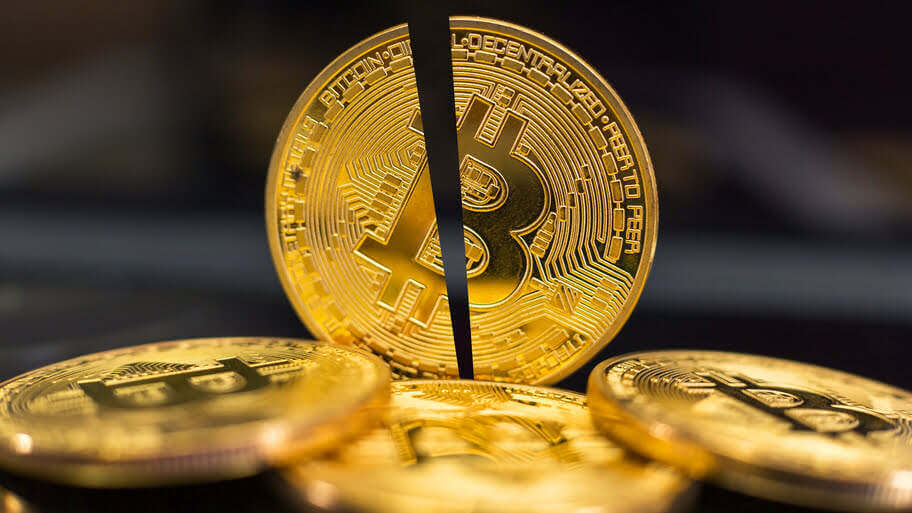Bitcoin has attracted lots of investors since its launch in 2009, largely due to the economic potential many see in it. The coin has even experienced some incredible highs throughout its life, which can be attributed largely to a practice known as bitcoin halving.
Bitcoin halving, also known as “The Halving,” occurs every four years or so. Since the coin’s inception, Bitcoin has undergone four halvings, with the most recent Bitcoin diamond halving taking place on May 11, 2020.
If you’re looking to get involved in Bitcoin, understanding these key concepts is crucial. In this article, we will explain everything you need to know about Bitcoin halving and how it affects the entire cryptocurrency market.
What Is Bitcoin Halving?
When Bitcoin is halved, it means that the rate at which Bitcoin is created is cut in half. This happens for every 210,000 blocks mined or approximately every four years.
Bitcoin works under blockchain technology, which is essentially a network of computers that run and track Bitcoin. A block of bitcoin is capable of storing about 1M worth of bitcoin transaction records.
Miners earn bitcoin by completing blocks. They add to each bitcoin block through a special software used to solve mathematical problems that help to produce a random 64- characters known as hash. Miners complete the task by locking each block so that it cannot be altered.
The halving of bitcoin reduces the rate at which bitcoin is released in circulation. Bitcoin halving will continue until all bitcoin is released into circulation, which will occur in 2140 (where the circulation of bitcoin is estimated to have reached 21 million). At that time, miners will also be rewarded with fees when they process transactions, and networks will pay the fees.
These fees are meant to ensure that miners continue mining to keep the system running. The importance of halving is that it will signify another reduction in the rate of new bitcoin production as it reaches its finite supply (21 million).
In October 2021, there were 18.85 million bitcoin in circulation and the remaining 2.15 million is kept to be dispersed as mining rewards. When bitcoin was mined in 2009, miners were rewarded with 50 bitcoins every 10 minutes. After three halves, only 6.25 bitcoin is now dispensed to miners after every 10 minutes.
According to digital currency and private advocate at Private Internet Access, Caleb Chen, miners are thus advised to plan for bitcoin halving as it leads to an instant reduction in revenue.
The Impact of Bitcoin Halving
Currently, bitcoin has experienced three different halves; in 2012, 2016, and 2020. Halving usually causes a large turbulence in the digital market as it reduces the rate in which new coins are created. This further lowers the number of new supply, despite the rise in demand.
Bitcoin halving also leads to complications for investors because assets with a low finite supply, like gold, will have a higher demand and cause an increase in price.
Historically, Bitcoin halving has caused a boost in its price. In the proximo halving Bitcoin chart, the first halving on November 28, 2012 led to an increase in price from $12 to $1,217. The second halving on July 9 2016, increased the price from $647 to a whopping $19,800. Although the price later fell to $3,276 on Dec 17, 2018, the current price was still higher than how it was before it peaked.
The most recent Bitcoin halving, which occurred on May 11, 2020, was even more dramatic, as the price jumped from $8,787 to $64,507 on April 14,2021. In a few weeks, the bitcoin price increased to 517 percent, a multiplication which seems to be consistent with Bitcoin halving.
Keep in mind, however, that it’s not only halving which can affect the price. On May 12th, 2021, Elen Elon Musk announced that Tesla would no longer be using bitcoin payments. That same week, the price of bitcoin dropped to about $40,000.
Still, the price of bitcoin hasn’t gone below the price it was before the halving occurred, which is $8,787.
If halving doesn’t increase the price and demand of bitcoin, miners will have no rewards. The reward of mining will also be smaller, and the value of bitcoin will not be as high. To change this, there has to be a reduction in the difficulty of mining a bitcoin transaction.
Halving has often resulted in high prices followed by a large crash. The drop has also led to more gains. In fact, it has still taken prices higher than it was before the halving.
Why Does Bitcoin Halve Every Four Years?
Usually, the Bitcoin algorithm is set to function so that it finds a new block once every 10 minutes. This time can be reduced if miners increase and add more hashing power to each block.
This is possible if the mining difficulty is reset, making it easy to solve the mathematical algorithm. Although the bitcoin network has grown, the average time to mine still remains 10 minutes. At other times, it even goes below 9.5 minutes.
When Is the Next Halving?
In estimate, about 900 new bitcoins are being mined and entered into the market daily.
As it continues to halve, the supply of Bitcoin continues to reduce. There is no defined date when the halving will occur; it only depends on the day the 210,000th block will be mined after the last halving.
Since bitcoin is mined every 10 minutes, the next halving is set to occur in 2024, but the day is still unknown.
What Is the Effect of Halving on Bitcoin Price?
Over the years, bitcoin has increased dramatically from its launch price in 2009. At that time, bitcoin was traded for some pennies. But now, the coin is being traded for more than $63,000 dollars. This is because halving the block reward doubles the cost to miners. Miners are like the producers of bitcoin, and the split causes them to adjust their selling price to their cost price.
The Bitcoin cash mining calculator over the years also indicated that the price of bitcoin rose several months before halving.
What if There Is No Bitcoin Left to Mine?
By the year 2140, the last of the 21 million Bitcoin will have been mined. Also, the halving will have stopped at this time, and there will be no more bitcoin left.
On the other hand, miners will continue incentivizing, validating, and confirming new Bitcoin transactions as the value of the transaction fees miners receive is likely to increase in the future. This is because a higher transaction volume with fees will be given, and Bitcoin has a higher nominal market volume.
Bottom Line
The increase in Bitcoin price is one of the possible reasons for interest in Bitcoin halving. The tendency of Bitcoin to increase in price in the future has also spurred more attention to Bitcoin price prediction and how the market will respond. However, as cryptocurrencies are highly volatile assets, there’s no way to know for sure how the market can change. As always, it is best to exercise caution.
Featured Image: Megapixl








